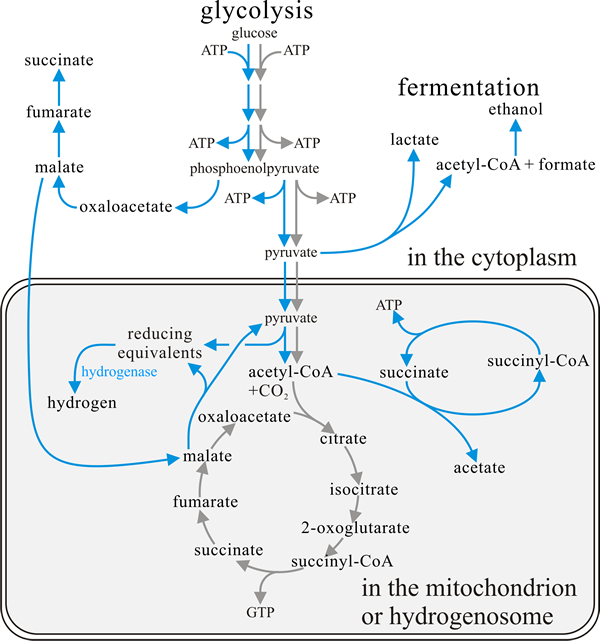Additional notes about the metabolism of anaerobic chytrids |
|
Obligately anaerobic chytrids have a crucial role in the primary colonization and enzymic degradation of lignocellulose in plants eaten by herbivores (and therefore crucial to the evolution of herbivores and to the prosperity of animal husbandry since humans first domesticated animals). These chytrids are potent producers of enzymes needed to degrade cellulose. Their own carbon metabolism relies on fermentation of glucose to acetate, lactate, ethanol and hydrogen. They possess an organelle called a hydrogenosome that generates ATP and appears to be a degenerate mitochondrion lacking a genome (see van der Giezen, 2002).
van der Giezen, M. (2002). Strange fungi with even stranger insides. Mycologist, 16: 129-131. DOI: https://doi.org/10.1017/s0269915x02003051. For an overall discussion of the biology of rumen chytrids consult this paper: Trinci, A.P.J., Davies, D.R., Gull, K., Lawrence, M.I., Bonde Nielsen, B., Rickers, A. & Theodorou, M.K. (1994). Anaerobic fungi in herbivorous animals. Mycological Research, 98: 129-152.
DOI:
https://doi.org/10.1016/S0953-7562(09)80178-0.
|
Close the window to return to 21st Century Guidebook to Fungi
This is a Resources Box from the 21st Century Guidebook to Fungi:© David Moore, Geoffrey D. Robson and Anthony P. J. Trinci 2019
